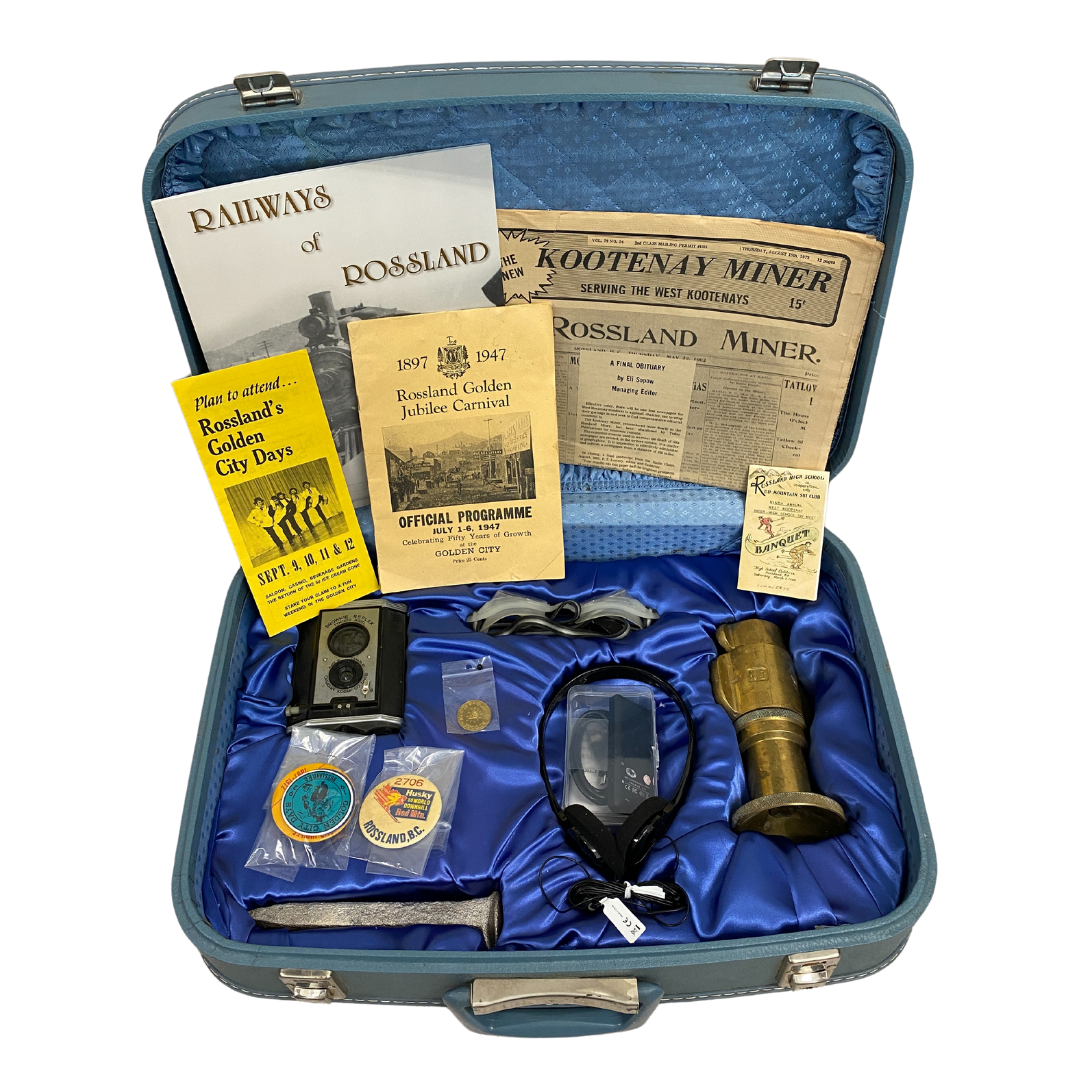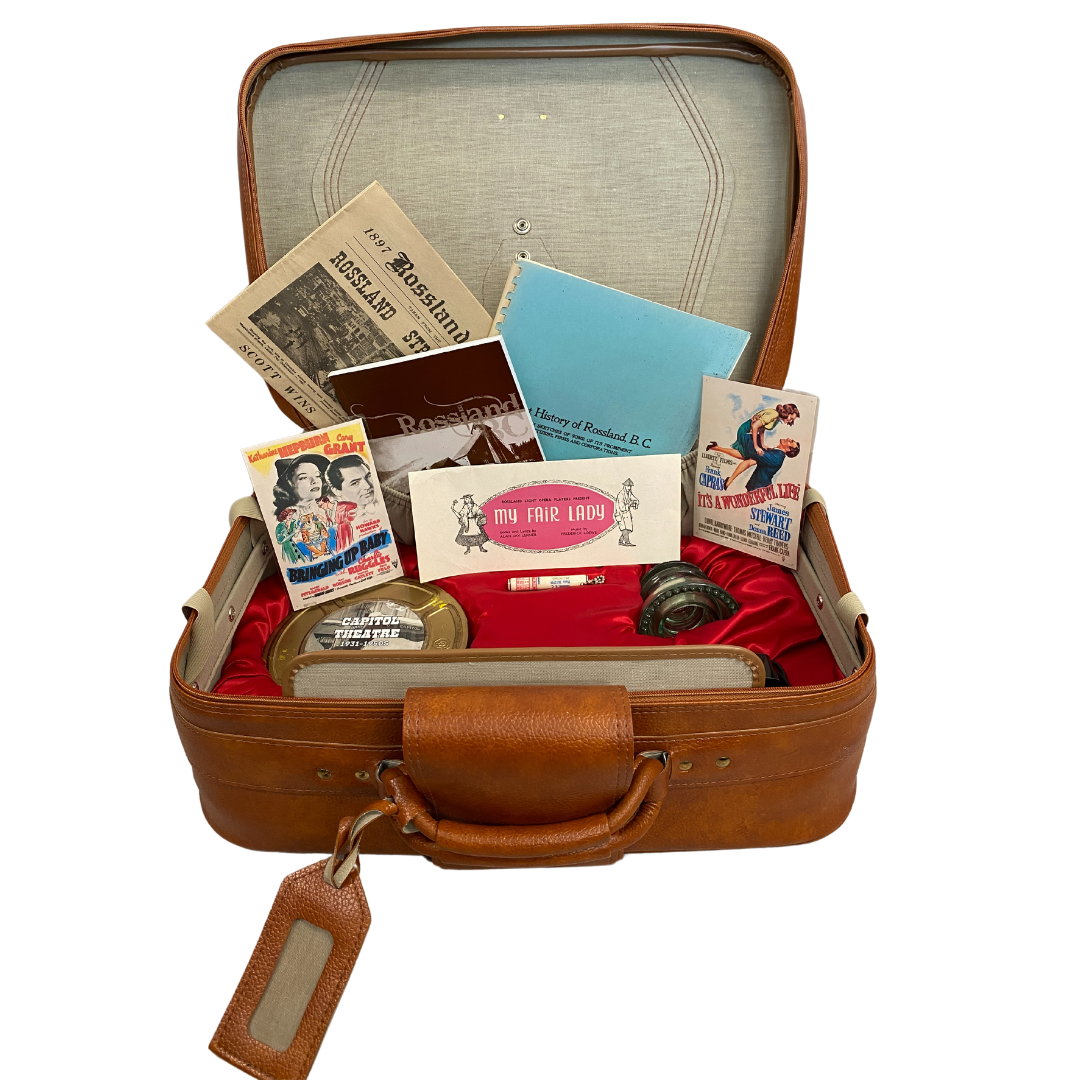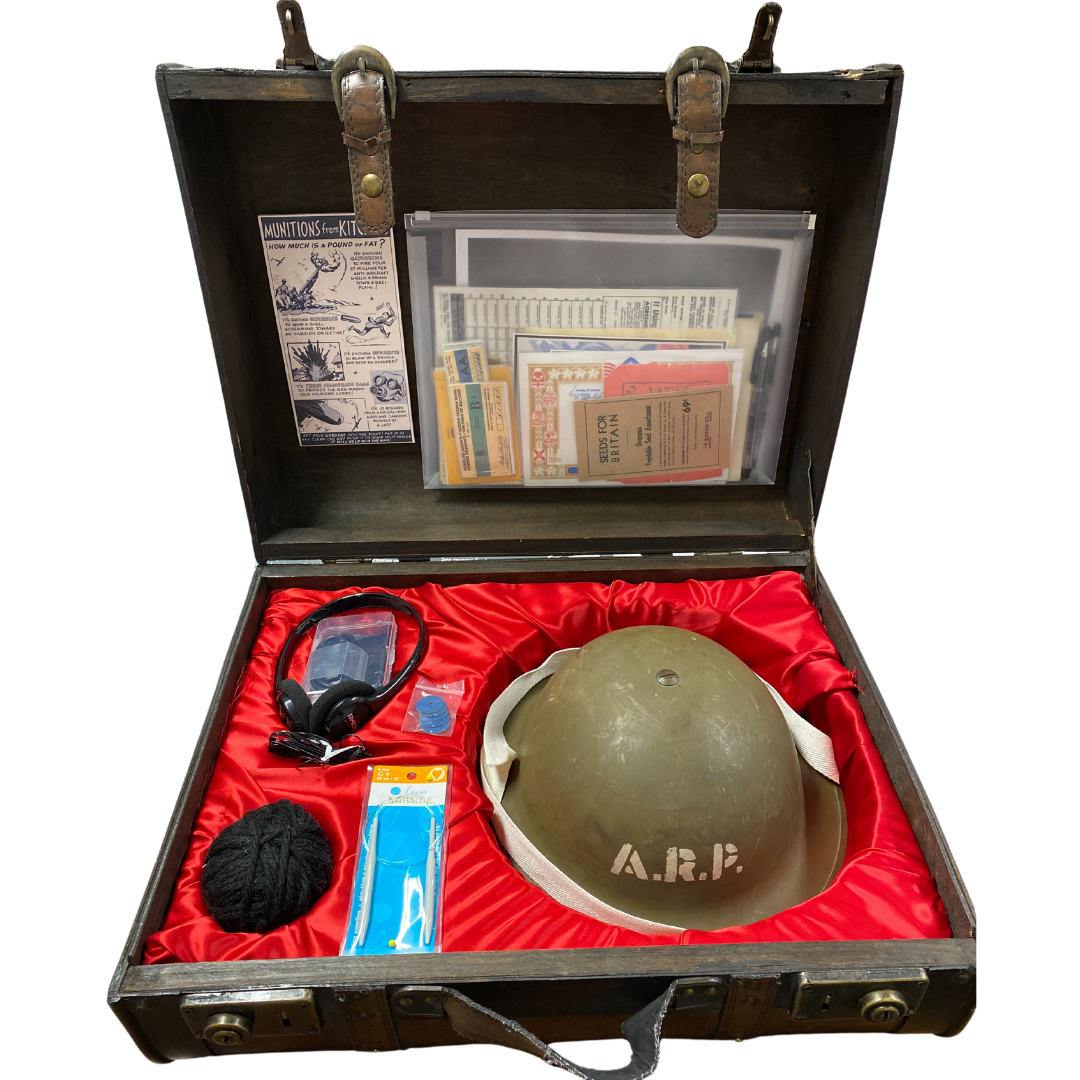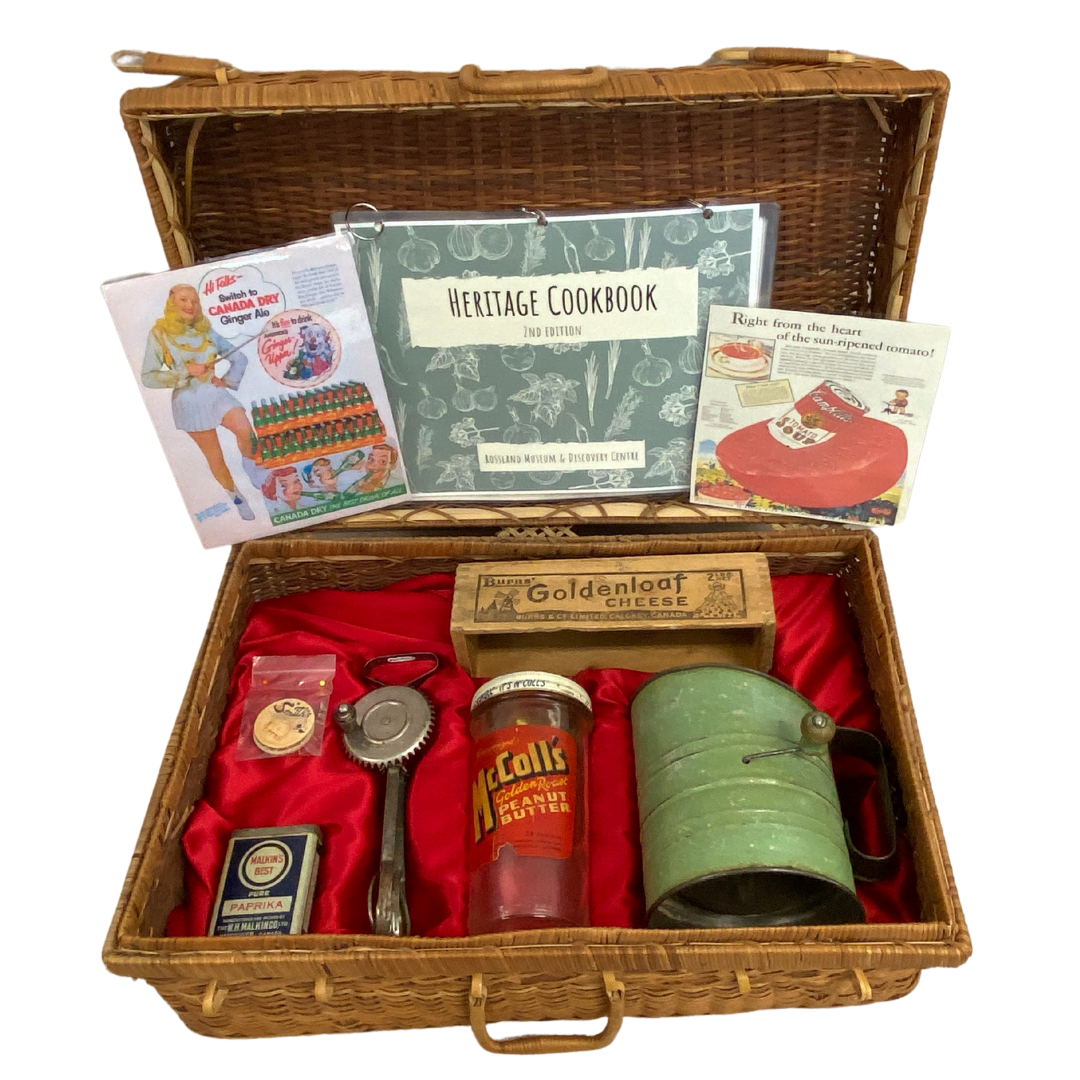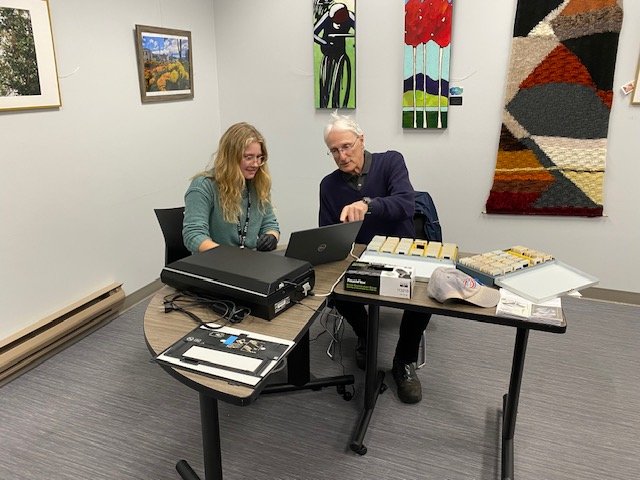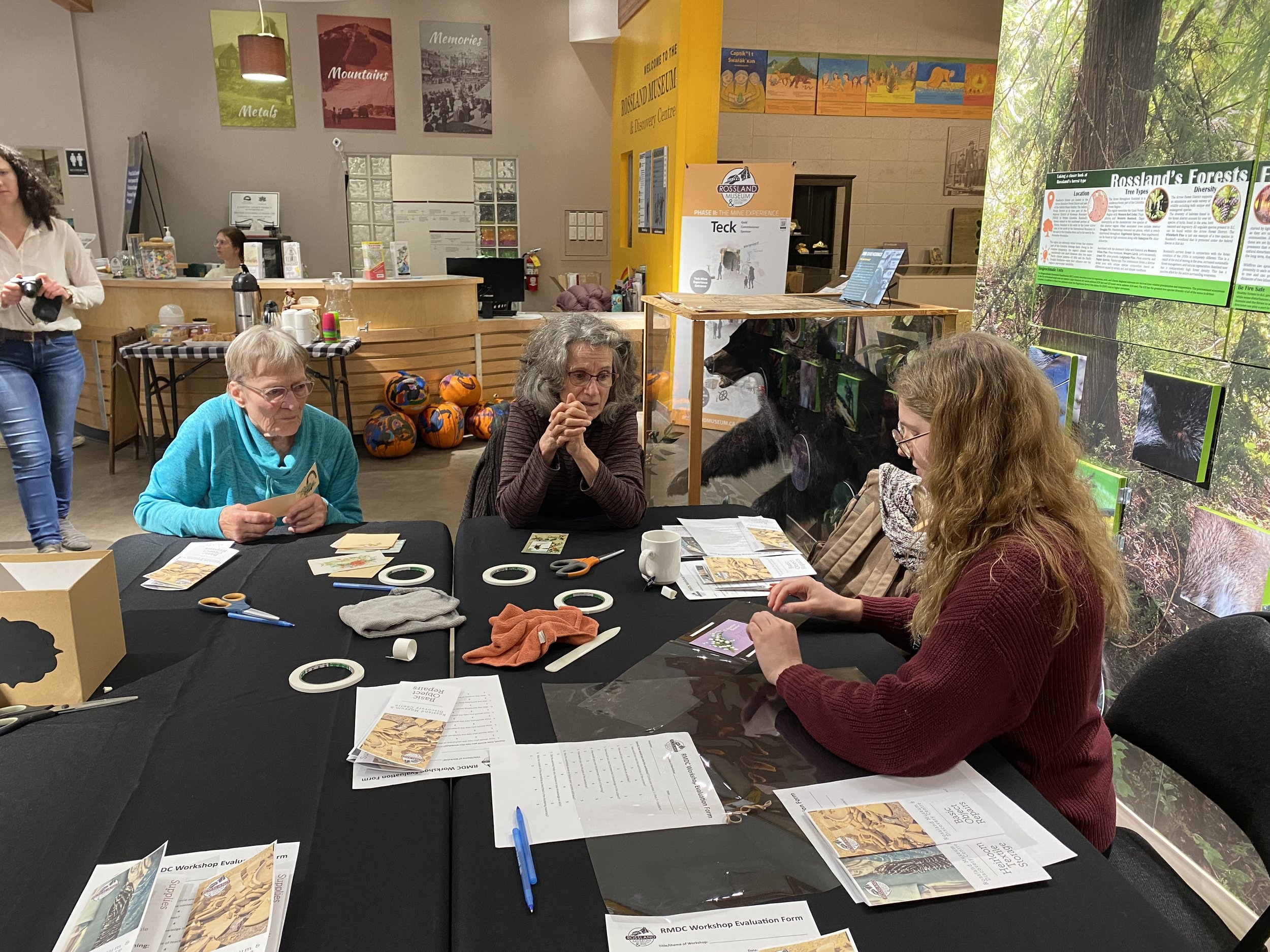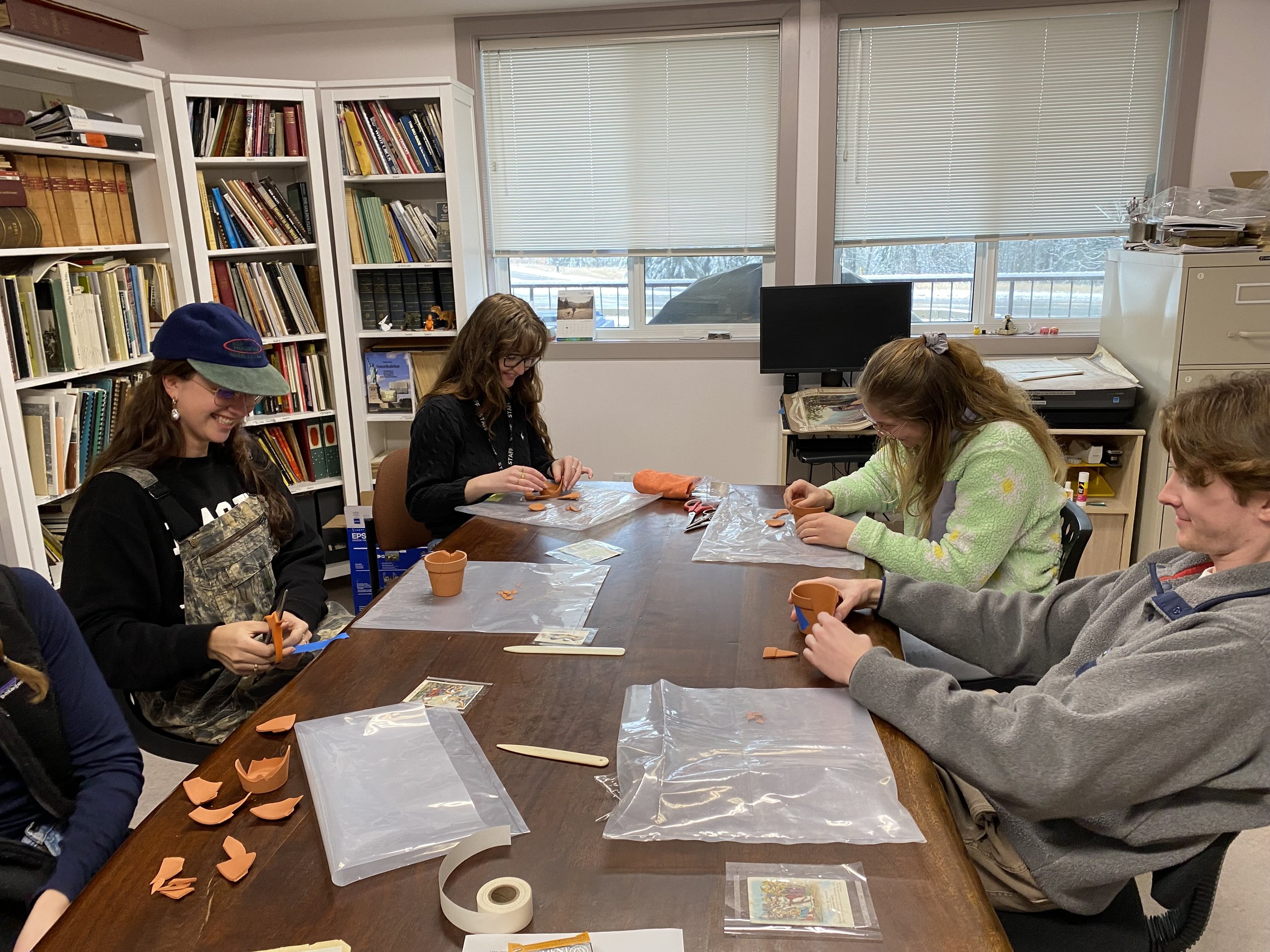Behind the Scenes: Archives Intern Spotlight with Matea Pozdnikoff
During my time so far at the Rossland Museum & Discovery Centre, I have been fortunate enough to partake in many different projects and tasks which have helped me progress my skill set in various areas.
- Matea
The Rossland Museum & Discovery Centre would like to thank the Government of Canada and the Canadian Council of Archives Young Canada Works program for contributing to this paid internship opportunity.
Major Projects
Senior Memory Boxes
Stack of the finished Senior Memory Boxes
The Senior Memory Box project was created with the goal of evoking nostalgia in seniors and to get them talking to their friends and loved ones about their lives through reminiscing. The boxes were created through a multi-step process: public consultation, topic selection, research, development, and testing. We sent out surveys to gauge which topics our target audience wanted us to focus on, from which we were able to narrow down the themes accordingly. From there we researched and decided what objects, photographs, and archival pieces to include as well as create activities for the seniors to participate in while using the boxes.
To put the boxes together, I collaborated with my fellow interns in other departments - Collections Interns Tyler and Amynte found artifacts to use in the boxes and did research on our topics; our Community Engagement Intern Kaleigh created questions and activities for the boxes; our Communications Intern Melanie created marketing posts for the boxes, taught me how to use Canva, helped decorate the boxes, and helped me cut many pieces of paper. The topics of the Senior Memory Boxes are: Rossland general history, Rossland Sports, Rossland Societies and Businesses, WWII Homefront, and Cooking.
I learned many things throughout this project. Through deciding on themes and researching our topics, I learned a lot about Rossland’s history and how to do research within our archives. During this project I progressed my computer skills, specifically in Canva, which I am proud of. I learned how to run a team meeting and practiced my communication and delegation skills with my wonderful coworkers, and so much more.
One of the many cookbooks I used to create my Heritage Cookbook in the cooking-themed Senior Memory Box
My favourite part of this project was creating the cooking box. For this particular box, I created a cookbook by searching through many old cookbooks in our research collection and pulling recipes that I thought were interesting, quirky, and tasty sounding. Other recipes, however, do not sound too appetizing (but that’s where the interesting part comes in!). I used Canva to create this cookbook and I wanted it to be very playful and a bit silly to match the creativity of the recipes I chose to include.
A lot of work went into creating the Senior Memory Boxes, and I hope our community enjoys them. Feedback is also very welcome and we are hoping that these boxes are something that will be used and updated frequently in the future!
Digitization
Digitization is an ongoing project at the Museum. I have been fortunate enough to see the last leg of the two major projects (for now) through! In these projects we have been digitizing our negatives and multimedia collection. For the negative collection I have helped scan, catalogue, and enter the negatives into our database. I also helped digitize our multimedia collection and do transcriptions of the audio collection. Our multimedia collection includes WHS tapes, cassette tapes, audio reels, and more!
Some of the negatives that I digitized
For the multimedia collection project, I was able to go to the Trail & District Public Library to utilize their digitization equipment for the video and audio recordings in our collection. With help from the wonderful staff at the library and TMTV in Nelson, we were able to digitize most of our collection!
Rehoused audio reels
Once the digitization was complete, it was time to transcribe the recordings. This involved running the recordings through an AI program to create a base transcription of the recordings to work from. I would then listen to each recording and edit the AI transcription to be accurate. This included correcting spellings, filling in who was speaking and when, writing down places, names, and more. I am currently working on completing this project with the help of many volunteers!
Throughout our digitization project, I learned how to digitize negatives, slides, and audio and video recordings, how to catalog photographs, how to embed metadata into our digitized photographs (a very important and rewarding step, although tedious), and how to create accurate transcriptions.
Negative storage in the archive
What I have loved about this project was listening to our multimedia collection and learning more about Rossland from its past residents over the last 70 years! I have also enjoyed cataloging our negatives. This includes looking through our negatives and describing what is in the image in our catalog forms. You can now view the negatives on our Community Portal and some of the multimedia collection is up on our YouTube channel with more content to come in the coming months as we finish up the transcriptions
The Archive
The archive always has projects to be worked on! When we are not processing new donations, we are constantly reorganizing the archive, creating new collections, revisiting old collections, updating them, and so much more! There is always something to do in the archive. I have learned and progressed immensely on my archival skills through hands-on learning. I have practiced RAD (Rules of Archival Description), creating new collections, processing donations, updating all the necessary inventories and paperwork, and much more!
Smaller Projects
While I have my main projects, I also have some passion projects I like to work on when I need a brain break! These projects include reorganizing and updating the inventory of the books in our research collection. This involves stamping the books (which is my personal favourite because it is so satisfying!) and organizing the books by theme. I have also been transcribing our Archives Accession Register into a physical book which is another very satisfying project.
Throughout my time at the museum, I have been able to help with a few workshops. These workshops include learning how to digitize negatives, photographs, slides, and documents, how to do basic document repair, how to encapsulate fragile documents, and soon, how to do book repairs! I have also learned at these workshops how to preserve textiles and how to do object repair. These workshops have taught me many different skills, and I have been fortunate enough to teach others as well! I have thoroughly enjoyed teaching others how to digitize, as the digitization project has been a major part of my job.
Posing with the pot I repaired!
For the digitization workshop specifically, we ask participants to bring in photographs, slides, negatives, and documents to digitize. We explain to them how the digitization process works and show them how to digitize as well. We then use our scanners to digitize the documents and photos they brought in. Not only is it rewarding to help people learn how to digitize, but I especially enjoy how excited people are to see photographs that were taken many years ago come back to life in a digital format. Digitizing not only helps to preserve old documents and photographs in a digital format, but it also makes them more accessible and easier to share with friends and family.


